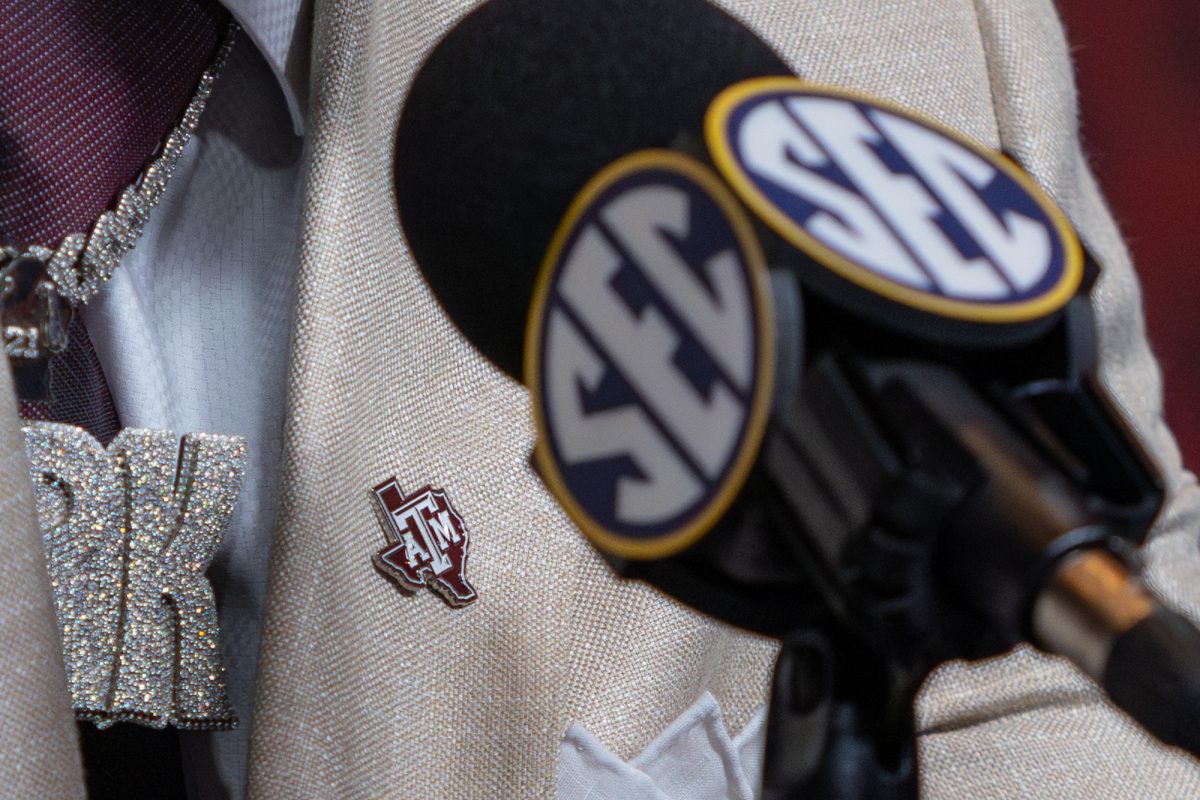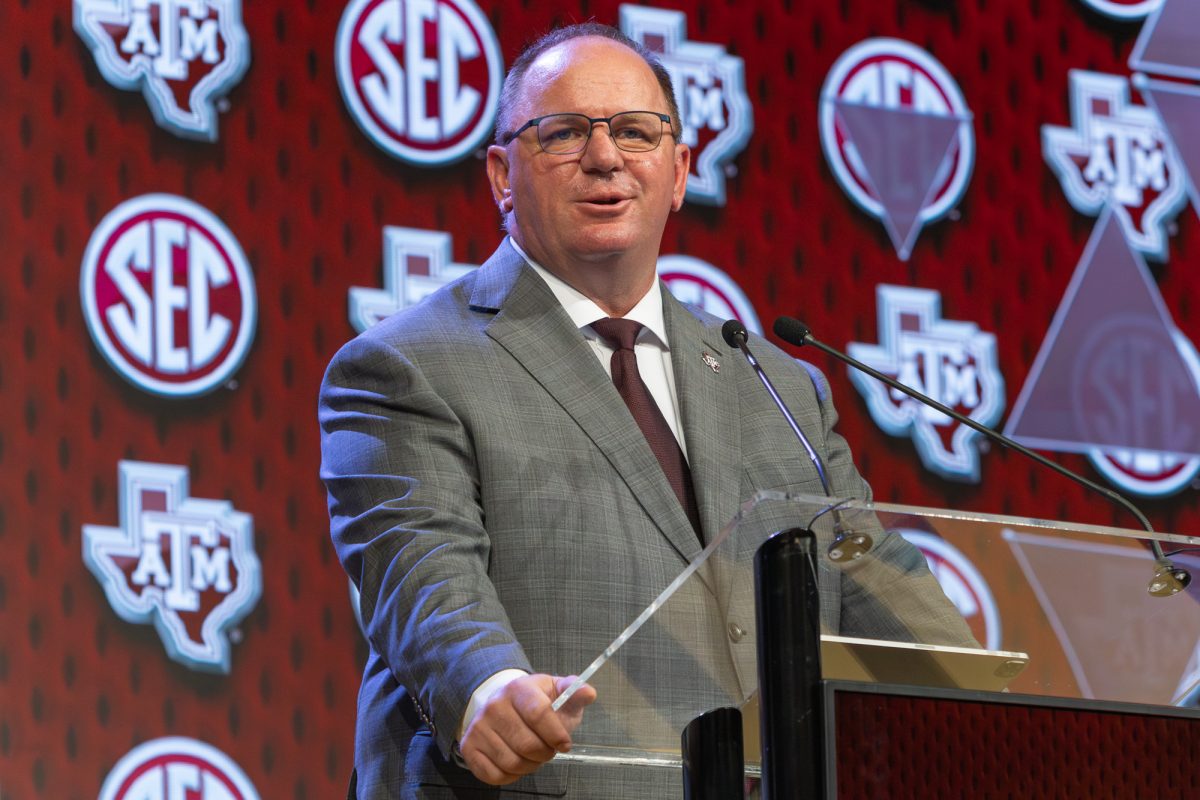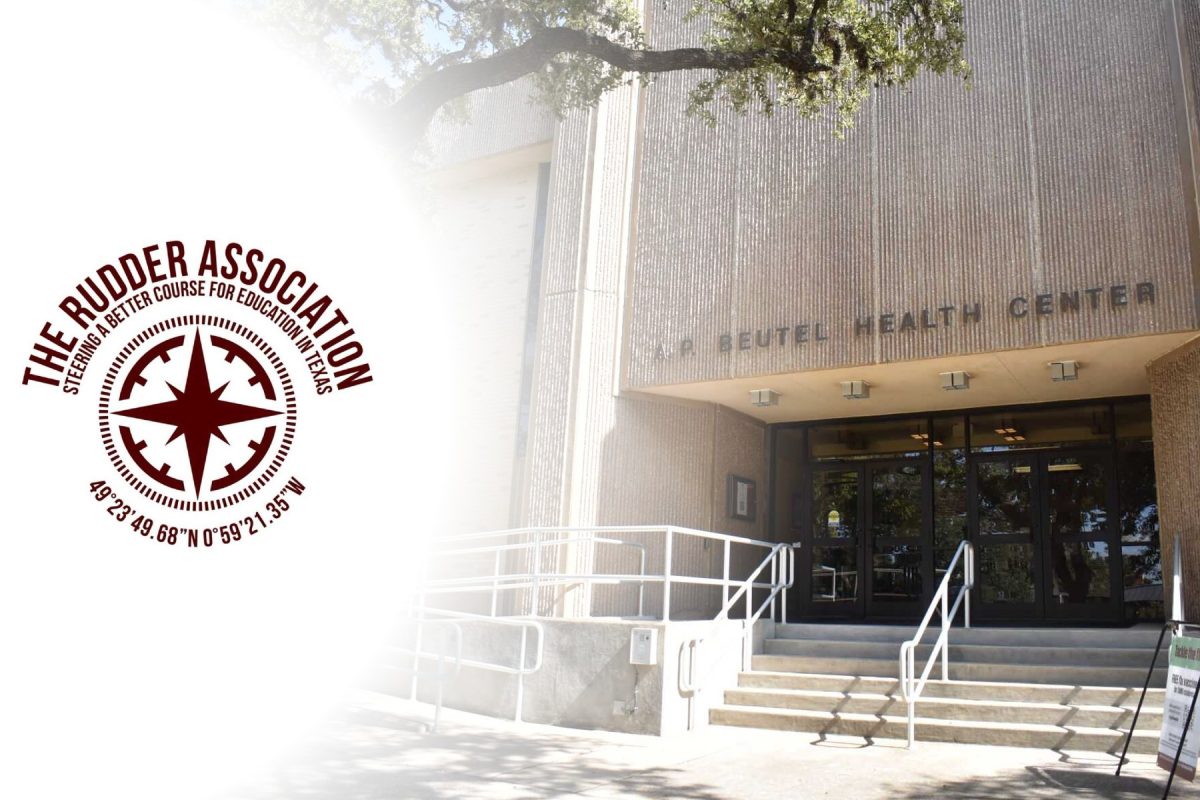When Texas A&M President R. Bowen Loftin made the “100-year decision” for the University’s conference realignment to the SEC in September of 2011, the bow-tied administrator could not foresee the implications of his alliance. Over a year later, the dividends continue to pay off as other conferences struggle for stability.
The Atlantic Coast Conference announced Monday morning the league’s 15 current and future members each signed a grant of media rights – effective immediately – with the intention of ending conference realignment along the eastern seaboard.
The agreed-upon document guarantees if a university were to leave the ACC, the school’s media rights for all home games – including revenue – would continue to belong to the league through 2027. Combined with its NCAA-highest $50 million exit fee, the conference has locked down its members for years to come.
The event marks the last of the major collegiate conferences outside of the Southeastern Conference – Big 12, Big Ten, Pac-12 and ACC – to sign a grant of media rights.
Following the announcement, ACC officials praised the league for its stability-inducing move, citing the recently signed document.
Stability is the last thing on my radar.
All I see is a cage – one in which university officials across the country locked their programs for at least the next decade.
Let’s put the magnitude of this incident in perspective.
If Texas A&M ever desired to leave the SEC, the University wouldn’t owe a single cent – not in exit fees or through any grant of media rights. Same story for Alabama, Florida and every other program residing within the conference.
If Florida State or any other ACC school wished to take its talents elsewhere, though, it would be forced to shell out $50 million while surrendering all revenue earned at sporting events through 2027. Oklahoma or any Big 12 program would give up roughly $19 million, depending on how soon it wanted to leave, in addition to its media rights.
The SEC remains confident enough with its own stature – both financially and competitively – to allow members the freedom to leave with no penalty. That stands head and shoulders above the forced alliance formed within other major conferences.
Not only is A&M a part of arguably the richest league in the country (soon to be richer following the April announcement of the SEC Network) but the SEC has also become the most flexible.
College football has evolved into a cutthroat business, emerging as one of the most affluent markets in the country. Although conference realignment has only recently surged, business Darwinism has played a central role within the media rights system since leagues were first formed during the early 1900s.
The whole basis behind business Darwinism and the capitalistic structure that ultimately governs college football is the aspect of free realignment. When a weak conference becomes unsustainable, a more successful league absorbs the best parts and the smaller one dissolves – i.e. the 1996 formation of the Big 12 from the top four programs of the Southwest Conference and the Big 8.
The grant of media rights signed by four of the five major conferences attacks this principle. Leagues that currently feel insecure due to recent realignment losses (the Big 12 and ACC) are locking down their members for the foreseeable future to protect the group instead of allowing the natural evolution of the enterprise of college football to run its course.
Universities have simply signed over their rights for the promise of security within their own conference.
When offered a choice between stability and freedom, there’s no true debate.
Freedom – and in this case, synonymously, the SEC – wins out every time.
Hostage crisis
April 24, 2013

Donate to The Battalion
Your donation will support the student journalists of Texas A&M University - College Station. Your contribution will allow us to purchase equipment and cover our annual website hosting costs.


















